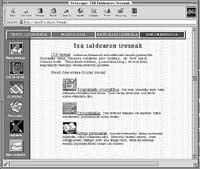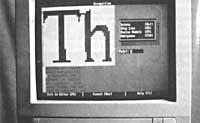Intelligent Research Environment in Second Language Learning
1999/08/01 Elhuyar Zientzia Iturria: Elhuyar aldizkaria
In this article we will present a work between Artificial Intelligence, Computational Linguistics and Psycholinguistics. The work is part of two research projects funded by the UPV/EHU Vice-Rector for Research in 1994 and 1995. The projects were carried out thanks to the collaboration between the IXA group that works in the department of Languages and Computer Systems of the UPV/EHU and the Basque language ILAZKI. The title of the projects is as follows: Intelligent Research System of the Second Language Learning Process.
The long-term goal of these projects was to create an intelligent system of analysis of the language learning process. The system would serve to analyze the representation of the intermodality of the student (grammatical competence) and its collection process.
Today, after five years of the aforementioned projects, we have designed an environment to investigate the learning process of the second language (H2). It consists of three different systems:
- One of them, with the help of the psycho-linguist, not only delights the intermodality of a particular student, but also studies the formation of a group of students at the same level of learning.
- The second, using intermodality models created by the previous one, offers the teacher assistance in the diagnosis of the linguistic structures that the student uses.
- The third is an interactive assistant that helps the student during the writing process, using both intermodal models and diagnostic information for a level of learning generated by the previous two.
Although the long-term objective was ambitious, the two mentioned projects defined short-term objectives that would lead us to it. The following briefly explains what we did in those specific projects.
The objective was to analyze some of the linguistic structures of the intermodality of students of the levels 9-10, 10-11 and EGA of the euskaltegi ILAZKI. To do this, 15 different students were selected throughout the course with minimal follow-up in the Basque language. Afterwards, we chose some linguistic structures. The different uses of these structures were then worked on in the works written by the students. Finally, the reasons students had for using these structures were discussed. Among the criteria we set out are the learning strategies of each student.
Although this study was carried out manually by two teachers, they also had semi-automatic support. We chose the linguistic structures based on the following criteria: first we made a list of the linguistic structures that teachers considered problematic in the three levels mentioned – when we say problems, both those that are "errors" with respect to H2, and those little assimilated to those categories (for example, and we use the conjunction too often, although and instead of the suyas-); and then we focus on some subset of the information currently.
In addition, we implemented a database to collect the work of teachers. In addition, we began to organize a corpus of student texts. Through the corpus, the linguistic structures used by students in each course were analyzed and the computer tools were worked to extract the percentages (automatically in some cases and semi-automatically in others).
- Project title: Intelligent Research System of the Second Language Learning Process.
- Objective: Definition and implementation of language tools for the
analysis of the learning process. - Financing: Research Vice-Rectorate
- Director: Arantza Díaz de Ilraza
- Research team: UPV:
Arantza Díaz de Ilraza, Montse Maritxalar and Iñaki Pikabea (psychologist and pedagogue)ILAZKI:
Aurkene Andueza, by Josune Martín. - Department: Languages and Computer Systems
- Centre: Faculty of Computer Science

Gai honi buruzko eduki gehiago
Elhuyarrek garatutako teknologia






